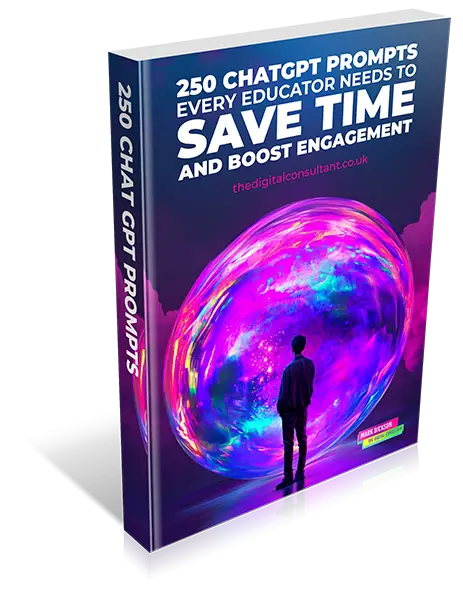Why SMART Goals Fall Short, and the Simple Shift That Fixes Them
SMART goals have been the go to framework in education for years, and to be brutally honest, I’m sick of them. I know they help define clear, measurable outcomes, ensuring that goals are specific, achievable and time bound, but while SMART goals might set the target, they just don’t provide the momentum, emotion or energy needed to sustain progress. They’re boring.
This is where PACT goals come in. While SMART goals define a destination, PACT goals focus on the journey, ensuring that habits and strategies are embedded into daily teaching and learning.
If you’ve ever set a SMART goal, whether to improve student outcomes, increase engagement, or embed vocational skills, but found it difficult to maintain consistent progress, PACT goals offer a way to stay on track.
PACT Goals: The Smarter, More Flexible Alternative to SMART Goals
PACT goals go beyond rigid targets and encourage a dynamic, adaptable approach to improvement in education. Unlike SMART goals, which tend to be outcome focused, PACT goals are output focused, embedding growth and progress within the learning process itself. They emphasise:
Purposeful:
Goals should align with meaningful and long term student success. They should go beyond hitting a milestone and focus on developing deeper learning and engagement. Why is the goal important for them? What will it mean?
Actionable:
Goals should translate into specific, tangible strategies that can be implemented in the classroom immediately. Rather than abstract aspirations, they should focus on what can be done today. What is the next action that can be taken to move you towards your goal?
Continuous:
Learning and teaching are evolving processes. PACT goals emphasise sustainable progress rather than one time achievements, ensuring that improvements are consistently integrated into teaching methods. We keep looking for ways to maintain momentum.
Trackable:
Unlike rigid SMART goal metrics, PACT goals encourage flexible tracking that measures progress holistically. This includes formative feedback, student engagement and ongoing refinements rather than just numerical outcomes.
Instead of focusing solely on outcomes, PACT goals support teaching strategies that evolve with student needs, leading to deeper learning, better engagement and a stronger educational framework. They offer a way to maintain momentum, ensuring that progress isn’t abandoned once an arbitrary deadline has passed. PACT goals have meaning, purpose and emotion, qualities often lacking in SMART targets.
By adopting PACT goals, educators can develop strategies that support student growth in a way that is adaptable and continuously refined based on classroom realities and student feedback. This approach helps create a learning environment where progress is measured not just by test scores, but by ongoing engagement, skill development and adaptability.
SMART and PACT Goals: A Balanced Approach

While PACT and SMART goals are sometimes viewed as alternatives, the reality is they work best together. They are not opposing approaches; rather, they complement each other to create a complete and effective goal setting strategy.
- SMART goals define the destination. They set clear, measurable and time bound objectives that establish where students or educators need to go.
- PACT goals ensure the journey happens effectively. They embed habits, strategies and ongoing progress mechanisms to ensure that the goal isn’t just a fixed endpoint but an evolving process.
For example:
- A SMART goal might be: “Increase student pass rates by 10% this term.”
- A complementary PACT goal could be: “Introduce weekly retrieval practice to reinforce key concepts and adjust based on assessment feedback.”
This approach ensures that while the overall goal remains clear and measurable, the strategies used to achieve it are flexible, responsive and continuously refined.
How PACT Goals Build Consistent Progress
SMART goals often feel like a pass or fail target. If you don’t hit the exact number, it can feel like failure.
PACT goals reward ongoing progress, making improvement a natural part of teaching and learning. Instead of saying, “Increase student engagement in Electrical Engineering by 20%,” try: “Use industry based problem solving tasks weekly to show relevance and increase participation.”
| Feature | SMART Goals | PACT Goals |
|---|---|---|
| Purpose | Defines the outcome | Builds the actions to reach it |
| Timeframe | Fixed deadline | Ongoing progress |
| Flexibility | Rigid objectives | Adaptable based on learning needs |
| Motivation | Focuses on achievement | Focuses on continuous improvement |
SMART goals create clarity around WHAT needs to be achieved, but PACT goals focus on the HOW we’ll achieve them.
Long Term Success with PACT Goals
Many educators set SMART goals for one term and then move on to something else. PACT goals ensure strategies evolve and improve over time.
Instead of: “Embed employability skills into the Catering course this term,” try: “Introduce one industry standard food safety skill each week and reflect on student performance through peer reviews.”
This way, employability skills aren’t just taught as a module, they become an integrated part of the learning journey.
How to Set PACT Goals That Work
Purposeful: Link Goals to Real World Student Outcomes
PACT goals should align with meaningful student development, whether academic, vocational or employability based.
Ask yourself:
- Why does this goal matter beyond the classroom?
- How does it prepare students for future study or employment?
Instead of: “Improve student engagement in Travel and Tourism,” try: “Use real case studies from airlines and hotels to increase student interest in customer service roles.”
Actionable: Make It Practical
PACT goals turn theory into practice by ensuring each goal has an immediate step that can be implemented.
Ask yourself:
- What can I introduce in my next lesson?
- What small change will have the biggest impact?
Instead of: “Improve digital literacy for Art and Design students,” try: “Introduce one industry standard design tool per project and provide structured peer feedback.”
Continuous: Embed Lasting Improvement
PACT goals ensure good teaching practices don’t stop at a deadline; they become habits.
Ask yourself:
- How can I integrate this into regular lessons?
- How can I adapt it based on student responses?
Instead of: “Develop interactive learning activities in Health and Social Care to reinforce key concepts and improve student engagement,” try: “Introduce weekly role play activities to improve student confidence in patient communication.”
Trackable: Measure Progress Without Being Restrictive
Tracking progress isn’t just about measuring success; it’s about learning and refining.
Ask yourself:
- What feedback will help me improve this approach?
- How can I measure progress beyond exam results?
Instead of: “Reduce dropout rates in Level 2 Hairdressing,” try: “Use short student reflections at the end of each session to identify challenges and adjust support strategies.”
Want the Research? Start With These Evidence-Based Resources
PositivePsychology.com (n.d.) PACT Goals: Purposeful, Actionable, Continuous, Trackable. Available at: https://positivepsychology.com/pact-goals/
NSLS Blog (n.d.) Meet PACT: The Goal-Setting Technique You’ve Never Heard Of. Available at: https://blog.nsls.org/blog/meet-pact-the-goal-setting-technique-youve-never-heard-of
Campus Commerce (n.d.) SMART or PACT? Choosing the Right Goal-Setting Framework. Available at: https://campuscommerce.com/blog/smart-or-pact-choosing-the-right-goal-setting-framework/
Hive.com (n.d.) What Are PACT Goals?. Available at: https://hive.com/blog/pact-goals/
Ness Labs (n.d.) SMART Goals Are Not So Smart: Make a PACT Instead. Available at: https://nesslabs.com/pact-goals
van Willigen, S. (n.d.) Alternative to SMART Goals: Why PACT Goals Help You Focus on What Matters. Available at: https://stijnvanwilligen.com/pact-goals-instead-of-smart/






